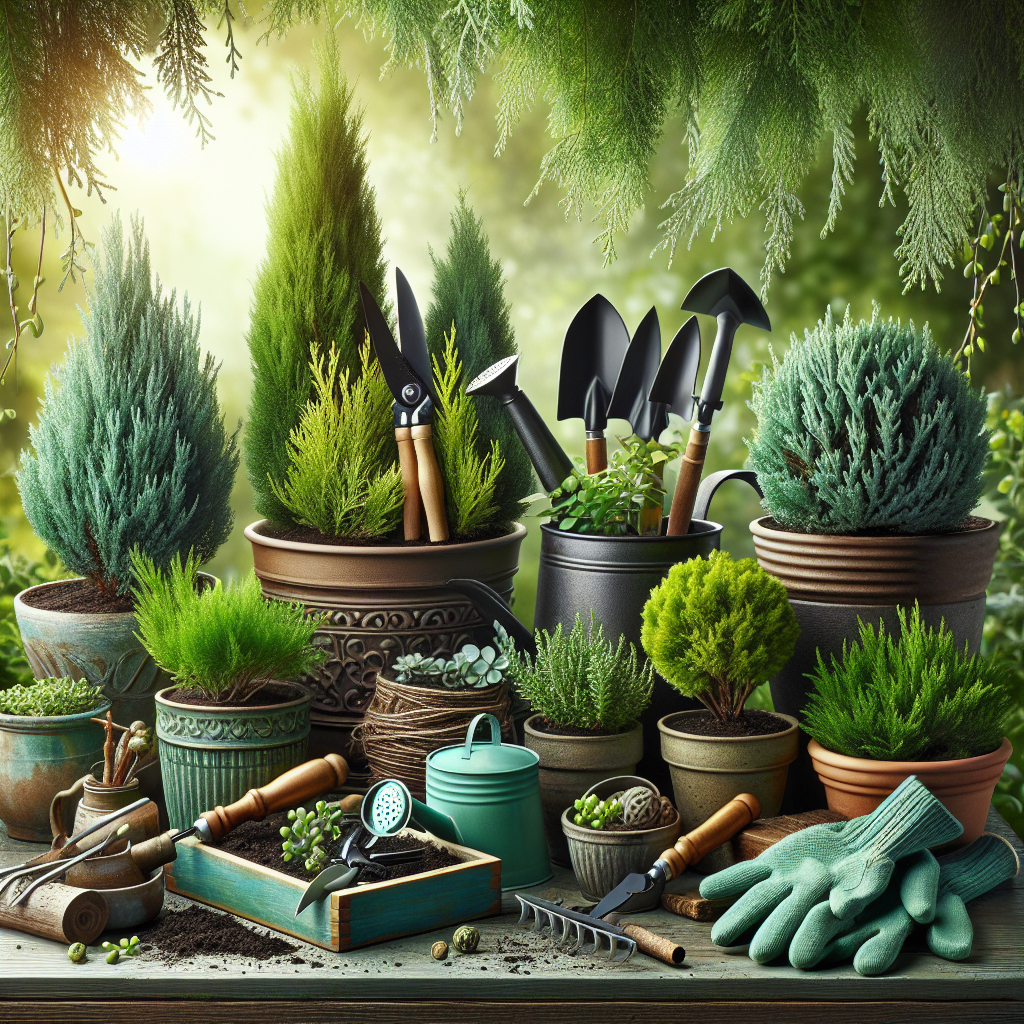Container gardening is a popular and versatile way to bring greenery and beauty into any space, especially for those with limited outdoor space or who want to create a more mobile garden. Juniper plants are a fantastic choice for container gardening, as they are hardy, drought-resistant, and come in a variety of sizes and colors. In this article, we will explore the techniques and tools you need for successful Juniper container gardening.
Choosing the right container is crucial for the success of your Juniper plants. The size of the container will depend on the size of your plants – smaller varieties can thrive in pots as small as 12 inches in diameter, while larger varieties may need containers that are 24 inches or more. Make sure that your containers have drainage holes at the bottom to prevent waterlogging, as Junipers do not like to sit in water.
When it comes to soil, Junipers prefer well-draining soil that is slightly acidic. You can use a pre-mixed cactus or succulent soil mix, or create your own by combining potting soil with sand or perlite to improve drainage. Make sure to plant your Junipers at the same depth they were growing in their nursery containers, and leave some space around the root ball to allow for growth.
Juniper plants require full sun to thrive, so make sure to place your containers in a sunny spot where they will receive at least six hours of sunlight per day. If you live in a hot climate, you may need to provide some afternoon shade to prevent your Junipers from getting scorched.
Watering is an essential aspect of caring for Juniper plants in containers. While they are drought-resistant once established, newly planted Junipers will need regular watering until their roots are established. Water thoroughly whenever the top inch of soil feels dry to the touch, but be careful not to overwater as this can lead to root rot.
Fertilizing your Juniper plants is also important for their overall health and growth. You can use a balanced liquid fertilizer during the growing season (spring through fall) at half-strength every four weeks. Avoid fertilizing in late fall or winter when your plants are dormant.
Pruning is another essential aspect of caring for Juniper plants in containers, as it helps maintain their shape and encourages new growth. You can prune your Junipers lightly throughout the year to remove any dead or damaged branches and shape them as desired. Avoid heavy pruning all at once, as this can stress your plants.
Pests and diseases can occasionally affect Juniper plants, especially when grown in containers. Keep an eye out for common pests like spider mites, scale insects, and aphids, which can be treated with insecticidal soap or neem oil. To prevent fungal diseases like root rot, make sure not to overwater your plants and provide good air circulation around them.
To make your container gardening experience even more successful and enjoyable, there are several tools that can help you care for your Juniper plants effectively:
1. Hand pruners – A good pair of hand pruners will make light work of pruning and shaping your Junipers.
2. Watering can – A watering can with a narrow spout will allow you to water directly around the base of your plants without splashing water everywhere.
3. Trowel – A trowel is essential for planting new Junipers or moving them into larger containers.
4. Soil moisture meter – This handy tool will help you determine when it’s time to water your plants by measuring moisture levels in the soil.
5. Gardening gloves – Protect your hands from thorns and dirt with a comfortable pair of gardening gloves.
6. Fertilizer – Choose a balanced liquid fertilizer specifically formulated for container-grown plants.
7.Loppers -For thicker branches that hand pruners can’t handle
With these techniques and tools at hand,
you’ll be well-equipped for successful
Juniper container gardening! Enjoy
watching your beautiful garden thrive
and grow right before
your eyes!













